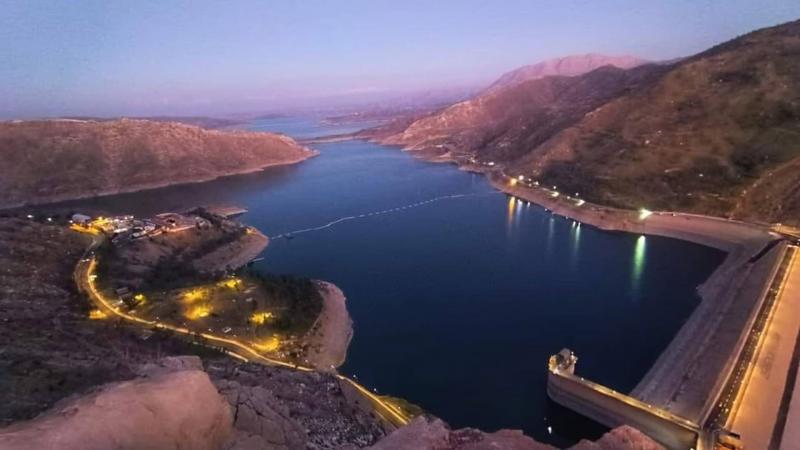The reservoir of Derbendikhan Dam in northern Iraq is almost full again for the first time after four consecutive years of drought and water shortage, with just 25 centimeters remaining for it to be completely full, a level not recorded since 2019. Samand Ismail, the manager of the Derbendikhan area, stated, "The storage capacity of the dam is 3 billion cubic meters, and today, with the available reserves, the dam is only missing 25 centimeters of water to be considered full." This was reported by AFP, quoting the official.
The dam, built on the Sirwan River south of the city of Sulaymaniyah in the Kurdistan region of Iraq, is close to being full, as Ismail mentioned, "In the coming days, we will be able to say that the dam has filled since the water is just a few meters away from the road extending along the edge of the basin." He noted that the last time Derbendikhan was full was in 2019, and since then, "we have only faced years of drought and shortage," indicating that "climate change in the region, as well as the construction of dams outside the Kurdistan region, has led to water shortages."
Heavy rains this winter have helped alleviate the water shortage in Iraq, which the United Nations considers one of the five countries most vulnerable to the effects of climate change. Ali Radi Thamer, the head of the dams directorate at the Ministry of Water Resources, reported that most of the six major dams in the country have seen an increase in water levels. Regarding Mosul Dam, the largest reservoir with a capacity of about 11 billion cubic meters, Thamer stated, "The storage level is very good, and we have benefited from the rains and floods."
He added that "Iraq's water reserves... reached a historically low level last summer," noting that "the available reserves today will have positive effects on all sectors, including agriculture and treatment plants that produce drinking water, as well as irrigating the marshes in southern Iraq that have dried up in recent years." He warned that despite 2019 witnessing "a sharp increase in water reserves," this was followed by "four consecutive seasons of drought," and although there are rains and floods today and water reserves have relatively improved, this does not mean the end of drought.




